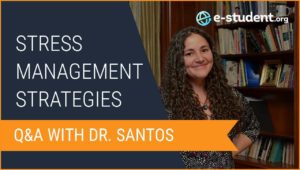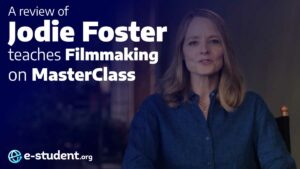- The SOAR method was developed to address four common inefficient learning strategies based on cognitive research
- The four steps of the SOAR method – Select, Organize, Associate, and Regulate – makes for an adaptable and versatile learning approach
- The method is particularly effective for building a deeper and lasting understanding more complex concepts
Despite a decade of note-taking experience, many college students still struggle to take effective notes that can help them achieve academic success. Many have learned to rely on their classmate’s notes or handouts provided by the professor. While these materials can help, it defeats the main purpose of taking notes.
Taking good notes can help students focus and understand main concepts faster. Moreover, it helps improve retention and can be used as an effective study aid. Of course, the key is knowing how to take good notes and how to use those notes.
There are several effective note-taking methods available. All of them have their own advantages and disadvantages. More than just a method for taking notes, the SOAR method is a systematic teaching and learning strategy for taking and using notes developed to address commonly used inefficient learning strategies. Its structured approach promotes a deeper understanding of information and helps individuals retain it more effectively.
We’ll be looking at the following in this guide to the SOAR method.
The SOAR Method
What is the SOAR method?
The SOAR method was developed by a professor of Educational Psychology at the University of Nebraska-Lincoln, Kenneth Kiewra. Professor Kiewra has been passionate about note-taking since his college days. He even became the Runner-Up of the Note Taker of the Year award twice. However, it was during his graduate studies at Florida State University in 1979 that he began to conduct studies on note-taking and its impact on learning.
Professor Kiewra found that students tended to follow four inefficient strategies that seriously hampered their learning. These four problematic strategies are:
- Incomplete note-taking
- Linear notes
- Piecemeal learning
- Repetition strategies.
Eventually, he was able to develop a method that can help students become effective learners. SOAR is short for Select, Organize, Associate, and Regulate, which are the key steps of this learning strategy. Dr. Kiewra based the SOAR method on cognitive research, specifically on how the brain processes new information. Each step of the SOAR method corresponds to a cognitive process and serves as an efficient alternative to a specific weak learning strategy.
What are the four steps of the SOAR method?
To better understand the SOAR method, let’s first take a closer look at each of the steps.
Select
The first step involves selecting all the main ideas, relevant details, and examples from a lecture or lesson through note-taking or reading text. The step is based on the attention process, which determines what information is important and should be recorded. It is during this process that information is moved from our sensory memory to short-term memory.
The Select stage aims to address students’ failure to record complete notes, often missing critical information. According to studies, there’s only a 5% chance of recalling information that was not noted down. This creates a gap in a student’s knowledge. To prevent this, students need to learn how to take complete notes, which means learning how to select and record all important ideas.
Organize
This step focuses on how we incorporate information into our long-term memory (storage). Many students have trouble organizing information. Most use lists or outlines to organize their ideas. Unfortunately, linear organization restricts learning because it ignores the relationships or connections between ideas.
The SOAR method teaches students how to organize ideas using graphic organizers such as matrixes and mind maps. This makes it easier for students to identify and remember connections between different facts and concepts. As a result, they can more easily grasp and remember key information.
Associate
Many students study by learning one idea at a time. This is known as piecemeal learning. It is not effective and efficient when learning different concepts. Through organization, we can create connections between new ideas. But to retain that information, we need to activate the cognitive process of encoding information.
To incorporate information from our working memory into our long-term memory, we need to create connections between what we want to know and what we already know, much like how we need to connect puzzle pieces in order to see the big picture. Once connections are made, the easier it will be for us to recall the information and apply it.
Regulate
Many students employ repetitive or redundant strategies to learn new ideas. Some examples of these strategies include highlighting, rereading notes, and recopying notes verbatim. Reciting pieces of information over and over again is another example of a repetitive or redundant strategy – one that many of us have employed right before exams. These strategies aim to expose the student to the information again and again, hoping to make it easier to recall. However, studies have shown that many of these strategies are not as effective as they seem. In fact, they don’t do much in helping students learn new concepts.
The SOAR method’s last step, Regulation, focuses on monitoring the student’s learning by requiring them to create practice test questions. This allows the student to practice retrieving the information from long-term memory, ensuring that learning has occurred.
Advantages and disadvantages of the SOAR method
It’s important that you understand the pros and cons of utilizing the SOAR method before you choose it as your preferred note-taking and learning strategy. There are many note-taking methods available, and you have your own learning style and preference to consider.
Based on cognitive research
The main advantage of the SOAR method is that it is founded on four important cognitive processes that are critical for learning new information:
- attention
- storage
- encoding
- metacognition
More importantly, it was created to counter weak learning strategies commonly used by students. It provides students with a systematic study plan that can ensure effective learning. In fact, according to an investigation of the SOAR method published in the Journal of Advanced Academics (2009), this is an integrated study system that is easy to use and effective.
Versatility
Another advantage of using the SOAR method is its versatility. This method can be used for face-to-face and online learning as well as for reading texts. And it is not just for learning. Teachers can utilize this method to engage students in meaningful learning, preventing them from getting distracted by mobile technology while in the classroom.
Adaptability
Students can use their preferred method of recording notes – writing them by hand or typing notes using a device. They can also choose how to organize their notes; they can use a mind map, a chart, or a hierarchy. It can be adapted to suit your learning style and preference.
Disadvantages
The primary disadvantages of the SOAR method are:
- Using the SOAR method is time-intensive. Students will need to dedicate time to selecting and organizing notes as well as creating associations and mini quizzes for regulation.
- The SOAR method requires students to have great focus and may not be suitable, for example, for fast-paced lectures.
How to use the SOAR method
The steps of the SOAR method can sound a bit confusing. However, in practice it is quite straightforward. To get started, just follow these steps:
Select
This step involves recording all the important information from a lecture or text. During a lecture, it can be quite difficult to take complete notes because teachers often say important details without writing them on the board. To ensure that you write complete notes, try to note down all the ideas and details you hear that aren’t written on the board. Make a reminder in your notes to ask your teacher to repeat or clarify any concepts after class that you couldn’t properly note down.
After class, review your notes and make sure that they’re complete. Make sure that you can easily understand the ideas. Fill in any gaps that you find using your own memory, a classmate’s notes, or even Google. Completing and refining your notes can help reinforce the information in your mind, making it easier to recall later.
Organize
This step takes place after note-taking, preferably immediately after class, so that the information is still fresh in the mind. Organize the ideas into a structure or framework that is easy to understand and shows associations or relations between the ideas. Avoid using a linear approach whenever possible. You can use matrices, charts, diagrams, or mind maps to graphically display the data.
For example, a linear outline could look like this:
Reptiles
- Hard, dry, scaly skin
- Fully developed lungs
- Lays eggs with a hard protective covering
- Cold-blooded
- Usually lives on land
Amphibians
- Smooth, permeable
- Gills then lungs
- Eggs covered in gel
- Cold-blooded
- Land and water
A matrix could look like this:

Associate
In this step, the student creates associations or connections between what is already known and the new concepts. Connecting his existing knowledge to new information can deepen his understanding and improve memory retention. Association can be done using analogies, mnemonics, or personal experiences/examples. Make as many connections as you can to ensure learning.
Here’s an example:
- Both are cold-blooded animals.
- Reptiles have hard, dry, scaly skin. Think of snake or crocodile leather.
- Amphibians have smooth, permeable skin. Think of how slimy a frog’s skin looks like.
- Both can live on land, but all amphibians can also live on water. Only some reptiles can live in water.
- Reptiles have fully developed lungs because they typically live on land. Amphibians need gills at first because they are usually born in the water. They develop basic lungs to help them live out of the water.
- Both lay eggs, but only reptiles lay eggs like a chicken. Amphibians lay soft eggs like caviar (fish eggs).
Regulate
To test your learning, you need to create practice questions. An alternative to mini quizzes would be to explain the concept to someone without checking your notes. Self-testing will help monitor your understanding of the new concepts.
Returning to our reptile and amphibian example, here’s an example of a practice question:
Choose Reptile, Amphibian, or Both
- Fully developed lungs
- Lays eggs
- Cold-blooded animal
- Smooth, permeable skin
- Lives in water and land
Conclusion
The SOAR method is a relatively recent concept compared to other note-taking techniques such as the Cornell and outline methods. However, studies have shown that it is quite effective in improving students’ test scores. Other approaches to note-taking method tend not to be based on how your brain processes and retains information. And importantly, the SOAR method can be adapted to suit an individual’s learning style and preference. When you apply this note-taking and learning strategy, you’re one step closer to achieving academic success.
Change this spreadsheet as needed. You might, for example, want to classify your tasks by type or provide additional information about the interruptions.



